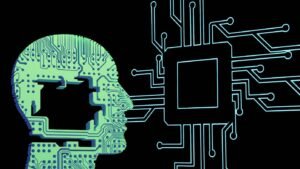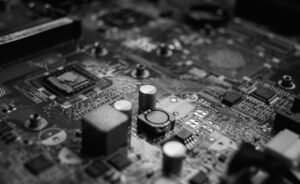AI and Automated Decision Making
Artificial intelligence (AI) and automated decision-making systems are increasingly shaping various aspects of our lives, from personalized recommendations on streaming platforms to autonomous vehicles. These technologies utilize algorithms and data analysis to make decisions without human intervention. While AI has the potential to bring numerous benefits, such as increased efficiency and improved accuracy, it also raises important ethical considerations and potential risks.
Key Takeaways:
- AI and automated decision-making systems rely on algorithms and data analysis to make decisions.
- These technologies offer efficiency and accuracy benefits, but also pose ethical concerns.
- Transparency and accountability in AI systems are crucial for maintaining trust.
- Algorithmic biases can lead to unfair outcomes and reinforce societal inequalities.
- Regulations and guidelines are necessary to ensure responsible AI deployment.
One of the key challenges with AI and automated decision-making systems is the lack of transparency and explainability. Many algorithms operate as black boxes, making it difficult for individuals to understand how decisions are reached. This opacity can lead to suspicion and mistrust. To address this, efforts are underway to develop explainable AI, which would provide insights into the decision-making process. Transparency and accountability are crucial to ensure the responsible use of AI.
*AI algorithms have been known to make biased decisions, reflecting the bias in the data they are trained on. For example, facial recognition systems have demonstrated higher error rates when identifying individuals with darker skin tones. Recognizing these biases is essential to prevent AI systems from perpetuating unfair outcomes and reinforcing societal inequalities. Ongoing efforts are focused on reducing bias in algorithms and ensuring fairness and equal treatment for all.
Regulations and Guidelines
Given the potential risks associated with AI and automated decision-making, regulations and guidelines are necessary. Governments and institutions are working to develop ethical frameworks and responsible AI principles to ensure the development and deployment of AI systems align with societal values. These regulations aim to address issues such as privacy, accountability, and bias. Compliance with these regulations can help mitigate potential harm and instill confidence in AI systems.
Impact on Industries
The widespread adoption of AI and automated decision-making systems is transforming various industries. For example:
| Industry | Impact |
|---|---|
| Healthcare | Automation in diagnostics and treatment planning leads to quicker and more accurate medical decisions. |
| Finance | AI-powered algorithms assess creditworthiness, detect fraud, and automate trading, improving efficiency and risk management. |
| Manufacturing | Robotic automation streamlines production processes, enhancing productivity and reducing human error. |
*The impact of AI on industries extends beyond these examples, with advancements poised to revolutionize various sectors, from transportation to customer service.
The Future of AI and Automated Decision Making
As AI continues to evolve, it is crucial to strike a balance between technological advancements and safeguarding human values. Continued research and development are necessary to improve AI algorithms, ensure transparency, address biases, and enhance accountability. Collaborative efforts between industry, academia, and policymakers can help shape a future where AI benefits society while mitigating potential risks.
| Concern | Solution |
|---|---|
| Transparency | Developing explainable AI systems to provide insights into the decision-making process. |
| Accountability | Establishing regulations and guidelines to govern responsible AI deployment. |
| Bias | Ongoing efforts to reduce biases in algorithms and ensure fairness in AI systems. |
In conclusion, AI and automated decision-making systems present opportunities for efficiency and accuracy improvements across various industries. However, it is important to address ethical concerns, ensure transparency, and mitigate biases to maintain trust and prevent potential harm. With responsible development and deployment, AI can enhance our lives while safeguarding societal values.

Common Misconceptions
Misconception 1: AI Will Take over Jobs
One common misconception about AI and automated decision making is that they will replace human jobs entirely. However, this is not entirely true. AI technology is designed to assist humans in performing tasks and making decisions, rather than replacing them completely. The following bullet points highlight important aspects of this misconception:
- AI technology is meant to complement human abilities, not replace them entirely.
- Humans play a crucial role in training and monitoring AI systems.
- AI can inevitably lead to the creation of new job opportunities as it improves efficiency and productivity.
Misconception 2: AI Will Make Perfect Decisions
Another misconception is that AI will make perfect decisions since it is often seen as superior to humans. However, AI systems are not flawless, and they have their own limitations. The following points provide a better understanding of this misconception:
- AI systems rely on the data they are trained on, and biases in the data can lead to biased decisions.
- AI systems may struggle to interpret nuances and context, which can impact decision-making accuracy.
- Human oversight is crucial to ensure AI systems make ethical and fair decisions.
Misconception 3: AI Is Only Relevant in High-Tech Industries
Many people believe that AI and automated decision making are only applicable in high-tech industries, neglecting its broader uses in various sectors. However, AI has the potential to impact a wide range of industries and fields. The following points debunk this misconception:
- AI technology is being implemented in healthcare to improve diagnosis accuracy and treatment plans.
- The financial industry utilizes AI to detect fraud and manage complex calculations effectively.
- Retail businesses use AI to enhance customer experience and provide personalized recommendations.
Misconception 4: AI Is All About Robots
Some mistakenly believe that AI and automated decision making are solely concerned with robots and physical machines. While robotics is one aspect of AI, there is much more to it. The following bullet points clarify this misconception:
- AI encompasses a broader concept that includes algorithms, machine learning, natural language processing, and more.
- AI is applied in various software applications and systems to automate tasks and enable intelligent decision-making.
- Not all AI technologies involve physical robots; many AI systems operate behind the scenes in software and platforms.
Misconception 5: AI Will Replace Human Creativity
Another misconception is that AI will replace human creativity, as it is often associated with logical and analytical tasks. However, AI can enhance human creativity and provide new tools for expression. The following points highlight this misconception:
- AI can be used to generate novel ideas and inspire humans to think creatively.
- AI can automate routine and repetitive tasks, freeing up time for humans to focus on more creative endeavors.
- Collaboration between AI and humans can lead to new and innovative solutions that were not previously possible.

The Role of AI in Healthcare
The table below provides an overview of the various applications of artificial intelligence in healthcare. From diagnosis to personalized treatment plans, AI has revolutionized the medical industry.
| Application | Benefits |
|---|---|
| Diagnosis | Improved accuracy and speed of diagnosis |
| Treatment Optimization | Enhanced treatment plans with personalized recommendations |
| Drug Discovery | Accelerated identification of potential drug candidates |
AI’s Impact on Autonomous Vehicles
The following table demonstrates the positive effects of AI on the development and implementation of autonomous vehicles. From enhanced safety to increased efficiency, AI plays a vital role in shaping the future of transportation.
| Advantage | Description |
|---|---|
| Safety | Reduction in human error, leading to fewer accidents |
| Traffic Efficiency | Optimized traffic flow and reduced congestion |
| Environmental Impact | Decreased carbon emissions and environmental footprint |
AI in Financial Services
The table below highlights the impact of AI on the financial industry, improving customer service, fraud detection, and financial planning.
| Area | Benefits |
|---|---|
| Customer Service | Enhanced customer experience through chatbots and virtual assistants |
| Fraud Detection | Improved detection and prevention of fraudulent activities |
| Financial Planning | Personalized financial advice and investment strategies |
The Ethical Dilemmas of AI
The next table highlights some of the ethical challenges associated with AI and automated decision-making. As AI becomes more pervasive, it is essential to address these concerns to ensure its responsible and unbiased usage.
| Concern | Description |
|---|---|
| Algorithmic Bias | Inherent biases in datasets leading to discriminatory outcomes |
| Privacy | Potential misuse of personal data collected by AI systems |
| Job Displacement | Impact on employment as AI automates certain tasks and roles |
The Future of AI in Education
The table below showcases the potential benefits of integrating AI into the education sector. By providing personalized learning experiences and automating administrative tasks, AI has the potential to revolutionize education.
| Advantage | Description |
|---|---|
| Personalized Learning | Customized content and adaptive learning pathways for students |
| Administrative Automation | Streamlined administrative processes, freeing up time for teachers |
| Accessibility | Increased accessibility for students with disabilities |
AI for Cybersecurity
The table below demonstrates how artificial intelligence reinforces cybersecurity measures by identifying threats, addressing vulnerabilities, and improving response capabilities.
| Capability | Description |
|---|---|
| Threat Detection | Real-time identification of potential cyber threats |
| Vulnerability Assessment | Identification of weaknesses in systems and networks |
| Automated Response | Rapid and proactive response to attacks |
AI in Manufacturing
The table below highlights the transformative impact of AI on the manufacturing industry. Increased efficiency, predictive maintenance, and improved quality control are just some of the benefits provided by AI technology.
| Benefit | Description |
|---|---|
| Process Efficiency | Optimization of production processes for higher efficiency |
| Predictive Maintenance | Anticipated maintenance needs to prevent costly downtime |
| Quality Control | Automated inspection for improved product quality |
AI’s Role in Customer Service
The table below highlights how artificial intelligence enhances customer service by providing personalized support, analyzing customer feedback, and improving overall satisfaction.
| Application | Benefits |
|---|---|
| Chatbots | 24/7 availability and immediate response to customer inquiries |
| Sentiment Analysis | Understanding customer feedback on a large scale |
| Personalization | Customized recommendations based on individual preferences |
AI and Climate Change Mitigation
The following table showcases how artificial intelligence helps address the challenges of climate change by optimizing energy consumption, predicting natural disasters, and facilitating sustainable solutions.
| Advantage | Description |
|---|---|
| Energy Efficiency | Smart grid systems to reduce energy waste and carbon emissions |
| Disaster Prediction | Early warning systems for hurricanes, earthquakes, and floods |
| Sustainable Solutions | Development of clean technologies and renewable energy sources |
Conclusion
Artificial intelligence and automated decision-making have transformed various sectors, from healthcare to transportation, finance, education, and more. The tables presented in this article highlight the numerous benefits and advantages AI brings to these fields. However, it is crucial to simultaneously address the ethical dilemmas surrounding AI, such as algorithmic bias and job displacement. By responsibly harnessing AI’s potential, we can continue to advance society and overcome significant challenges.
Frequently Asked Questions
What is AI?
AI, short for Artificial Intelligence, refers to the simulation of human-like intelligence exhibited by computers and machines. This technology enables machines to perform tasks that would normally require human intelligence.
What is Automated Decision Making (ADM)?
Automated Decision Making involves using AI systems to automatically make decisions or take actions based on pre-defined rules or algorithms. ADM aims to streamline decision-making processes and eliminate human bias or subjectivity.
How does AI influence Automated Decision Making?
AI plays a crucial role in Automated Decision Making by providing the necessary algorithms and models that enable machines to analyze data, identify patterns, and make informed decisions based on the input provided. AI enhances the speed, accuracy, and efficiency of ADM systems.
What are the benefits of AI and Automated Decision Making?
AI and Automated Decision Making offer various benefits, including increased efficiency, faster decision-making, reduced errors, cost savings, enhanced productivity, scalability, and improved accuracy. These technologies can handle large amounts of data and perform complex analyses more effectively than humans.
What are the potential risks associated with AI and Automated Decision Making?
Some of the potential risks include biased decision-making due to biased input data or algorithms, lack of transparency in decision-making processes, privacy concerns, and cybersecurity risks. Additionally, reliance solely on AI systems may also lead to the loss of human judgment and decision diversity.
How can biases be addressed in AI and Automated Decision Making?
To address biases, it is crucial to ensure the quality and fairness of the data used for training AI models. Detecting and mitigating biases in algorithms and decision-making processes is essential. Regular auditing and monitoring of AI systems can help identify and rectify biases. Incorporating diverse perspectives and ethical considerations throughout the entire AI development cycle is also necessary.
Are AI and Automated Decision Making replacing human jobs?
AI and Automated Decision Making have the potential to automate certain tasks, but they are not necessarily replacing human jobs entirely. These technologies are more commonly used to augment human capabilities, streamline processes, and handle repetitive or data-intensive tasks. They often free up human workers to focus on more complex and creative work.
How can the accountability of AI and Automated Decision Making be ensured?
Ensuring the accountability of AI and ADM systems requires transparency, auditability, and governance frameworks. Clear documentation of decision-making processes, explainability of AI models, and proper monitoring mechanisms are vital. Establishing legal and regulatory frameworks that govern the use of AI can also contribute to accountability.
What industries are utilizing AI and Automated Decision Making?
AI and Automated Decision Making have applications across various industries. Some prominent sectors include healthcare, finance, manufacturing, customer service, logistics, transportation, and marketing. These technologies are being used to optimize processes, improve customer experiences, drive innovation, and gain competitive advantages.
What is the future outlook for AI and Automated Decision Making?
The future of AI and Automated Decision Making is promising. Advancements in technologies like machine learning and natural language processing are expected. Continued research and development will likely lead to more sophisticated AI models, improved decision-making capabilities, and greater integration of AI into various domains of society.





